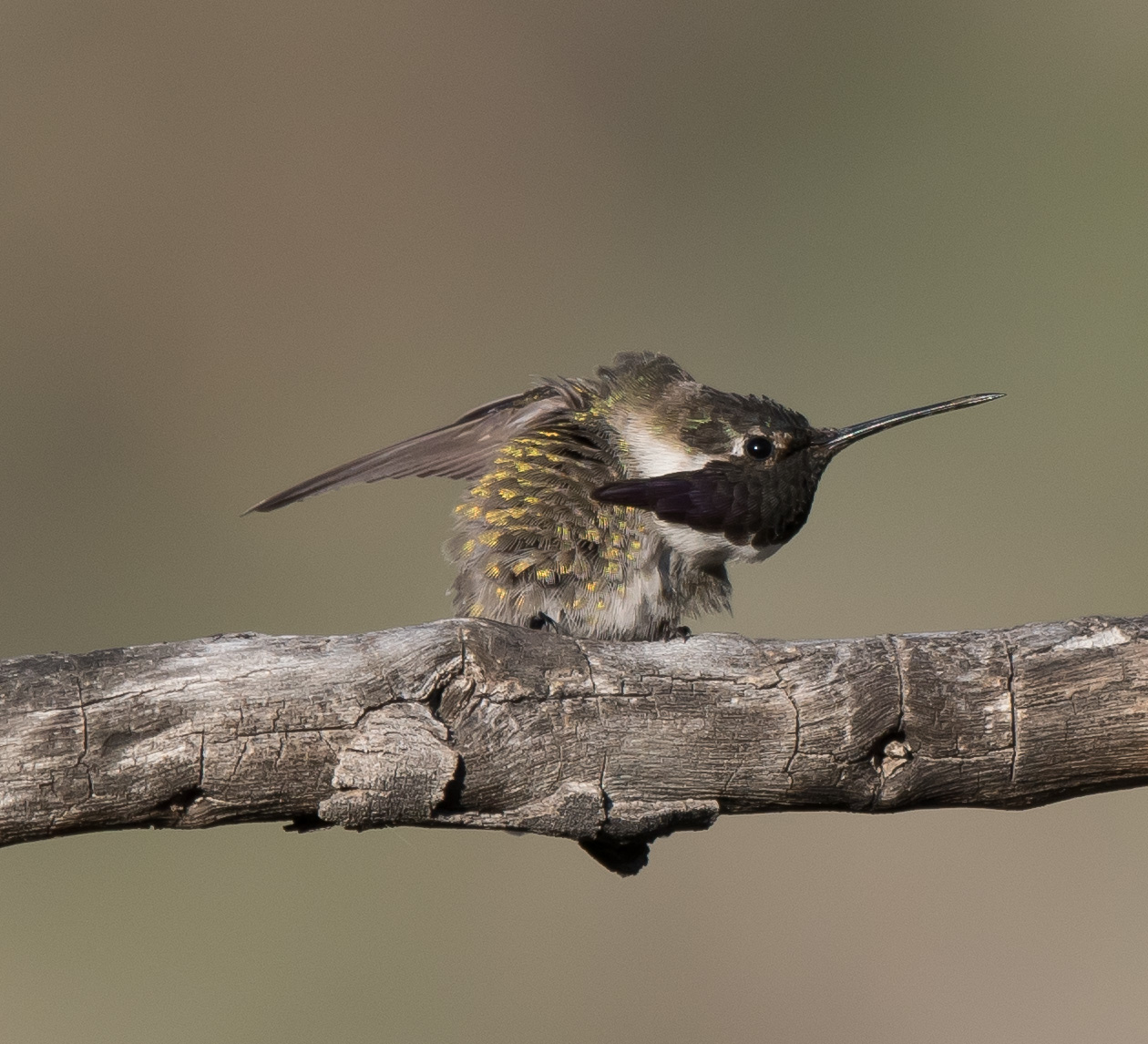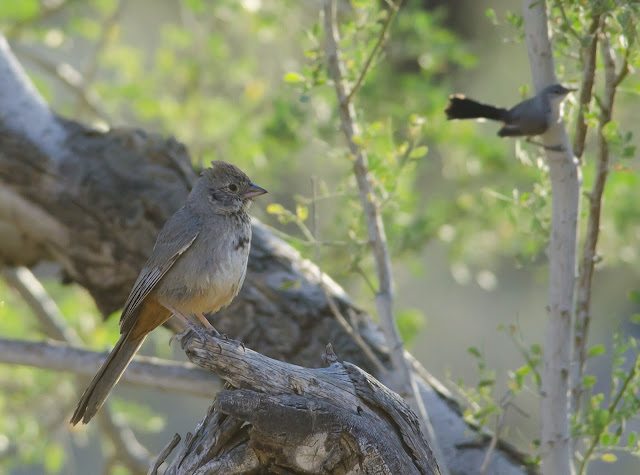After spending last weekend at home and staying cool, I started having withdrawal symptoms on my birding habit! It was time to venture out again, and with the summer heat in the valley likely to be around for about the next 3 months, I needed to find someplace cool to go birding. Just a short drive east of Mesa and the heat of the valley, are the communities of Globe and Miami in Arizona. And just south of these communities is a small range of mountains known as the Pinal Mountains. The elevation of these mountains is around 7500', and maybe a bit higher at the highest point and they are surrounded by desert which makes this habitat almost a mini Sky Island. Temperatures near the top can be 20° to 30° lower than in the lower elevations. The communities of Globe and Miami, have all the amenities one could want for a casual vacation or getaway. The area is often overlooked as a getaway from the big city heat and crowds.
When I visit this place, I usually head south out of Globe and follow Russell Road until it intersects with FR 651 which I follow the rest of the way to the top. There is great birding all along the way with the variety of species constantly changing as one drives up higher in elevation. In the lower elevations I found several Western Kingbirds that were busy being what they are, 'flycatchers', meaning they catch and feed mostly on flying insects. Occasionally, they will perch from a high spot looking for its next insect.
Western Kingbird
On this trip I also heard and then saw, several Black-chinned Sparrows, which is not an unusual species, but this time I found them at lower elevations than I had in the past.
Black-chinned Sparrow
A bit higher up, I started finding the beautiful Spotted Towhee and due to their general behavior, many times they are heard and not seen as they tend to be a bird that favors foraging under the bushes and low to the ground. However, at one stop, I heard one calling and the next thing I knew, it flew up into a tree along the road where I had parked and posed for some photos. (It must have known that the first one I saw earlier caught me off guard and I was not able to get a decent photo!)
Spotted Towhee
Just as I was reaching the area where Pine trees start appearing, I found some Black-headed Grosbeaks. The males were a bit far away for photos, but one female, did come in for a close landing, but she made sure that some leaves of a nearby branch partially covered her face.
Black-headed Grosbeak-female
During the trip to the top, I had two different flocks of Bushtits making their presence known. These small birds (about 4½") usually travel in small flocks, flitting from bush or tree to the next, gleaning insects. Although they are not real skittish around humans, they can be difficult to photograph as they are very active and constantly on the move.
Bushtit
A short distance into the pines, and at my first stop on the road, a very vocal Cooper Hawk came flying in to my area flying from one tree to another, all the while calling, so it was not hard to find. These raptors are simply amazing with their ability to navigate in the trees. They can swiftly fly from within the thick branches and trees to capture their prey.
Cooper's Hawk
Cooper's Hawk
Further up near the top, I rounded a curve in the road and discovered a couple of deer in the road, so I stopped my car and very quietly and slowly got out to capture a photo. Once of them looked back very inquisitively. At the same time, a couple of Painted Redstart juveniles were flitting close by and I was have having a hard time focusing on what I should be shooting with the camera. Guess I settled for a little of both. The Painted Redstarts are juveniles from this year's hatch as neither one has obtained its fully red belly coloration, although one of the them has started with a few red feathers on its side.
White-tailed Deer
Painted Redstart
Painted Redstart
The next stop along the road was fascinating as well. What got my attention was some Red-faced Warblers, but alas, I was not able to capture any photos. But while I was concentrating on viewing them, several birds flew in and made their presence known. Guess they did not want to be ignored and I was not going to let them down. First was a White-breasted Nuthatch that actually landed on a branch not far from me and worked its way down to the end, not more that 10' from me making it too close for a photo. Had to wait for it to move a bit further away. A Western Tanager male also came in for a good close-up view.
White-breasted Nuthatch
Western Tanager
A pair of Hepatic Tanagers also put in a brief appearance, but definitely did not want to pose for the camera.
Hepatic Tanager
Still in the same spot, I had probably my best view of a Virginia's Warbler ever. Even though it was seen at the top of a tall pine a distance away, this time I actually was able to get an identifying photo of it. It has not been an easy warbler to find and photos have been even tougher. Another warbler that came in for a visit was a juvenile Grace's Warbler, or at least, that is what I think it is. Definitely not as brightly colored or marked as the adults that I am used to seeing, but the color patterns look right. And a Broad-tailed Hummingbird made an appearance feeding on nectar from the roadside flowers.
Virginia's Warbler
Grace's Warbler
Broad-tailed Hummingbird
Once I reached the top, I always enjoy spending time at Roy and his wife's cabin. They have created a bird haven and the hummingbirds are the main attraction. But along with the hummingbird feeders and the several species of hummingbirds that can be found there, they also have some other great features that attract many other species of birds. On this trip, one of the highlights was a pair of House Wrens being kept very busy by feeding their very vocal babies in their nest. They were making countless trips bringing back various insects for those voracious appetites.
House Wren
The small pools of water they had set out were attracting many birds for a drink or for a chance at bathing. A few of these birds consisted of Yellow-eyed Juncos, Western Tanagers, an Acorn Woodpecker and even a Red-breasted Nuthatch.
Yellow-eyed Junco
Western Tanager
Acorn Woodpecker
Red-breasted Nuthatch
What a great way to spend a day when the heat of the desert is creating a hot and not-so-enjoyable day for birding around the city. It is wonderful to be able to venture out of the city a short distance to a spot that is cool and refreshing. Anyone needing directions, please feel free to contact me.


















































